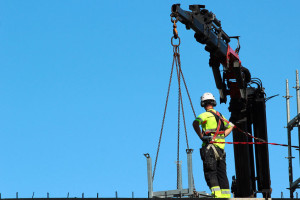 The construction industry is known for its demanding and hazardous nature, with workers often facing numerous risks. Among these dangers, falls remain one of the most prevalent and severe. Every year falls account for a significant number of injuries and fatalities in construction sites worldwide. However, through proactive measures and a steadfast commitment to safety, companies can mitigate these risks and protect their workers.
The construction industry is known for its demanding and hazardous nature, with workers often facing numerous risks. Among these dangers, falls remain one of the most prevalent and severe. Every year falls account for a significant number of injuries and fatalities in construction sites worldwide. However, through proactive measures and a steadfast commitment to safety, companies can mitigate these risks and protect their workers.
Construction sites often involve working at heights, such as scaffolding, ladders, or rooftops. The combination of unstable surfaces, changing weather conditions, and complex tasks increases the risk of falls.
Steps to Reduce Fall Hazards in Construction
- Comprehensive safety training: Companies must prioritize comprehensive safety training for all workers. This should include regular refreshers on fall protection, hazard identification, proper use of equipment, and emergency response procedures. By ensuring that workers are well-informed and equipped with the necessary knowledge, the likelihood of accidents can be significantly reduced.
- Risk assessments and safety plans: Conducting thorough risk assessments is crucial to identify potential fall hazards specific to each construction project. Companies should develop site-specific safety plans that address these hazards and outline preventive measures, such as guardrails, safety nets, and personal protective equipment (PPE). Regular inspections should also be carried out to ensure compliance with safety protocols.
- Proper equipment and maintenance: Employers must provide appropriate equipment to workers and ensure it is well-maintained. This includes sturdy scaffolding, secure ladders, and reliable safety harnesses. Regular inspections and maintenance checks should be conducted to identify and rectify any equipment defects promptly.
- Promote a safety culture: Companies should foster a culture of safety, where all workers understand that their well-being is paramount. This involves promoting open communication, encouraging workers to report potential hazards, and promptly addressing safety concerns. Safety awareness campaigns, toolbox talks, and recognition programs can also reinforce the importance of safe practices.
- Collaborative partnerships: Construction companies should collaborate with industry organizations, safety regulators, and trade unions to share best practices and learn from successful safety initiatives. Networking and participating in safety conferences and workshops can help foster a collective effort toward reducing falls in the industry.
Falls in the construction industry pose a significant danger to workers and can have severe consequences for both individuals and companies. By prioritizing safety through comprehensive training, risk assessments, proper equipment, and a robust safety culture, construction companies can take meaningful steps to reduce fall hazards. Embracing technological advancements and fostering collaborative partnerships will further enhance safety practices. Ultimately, the collective effort to prioritize worker well-being and minimize falls will result in a safer construction industry.

Recent Comments